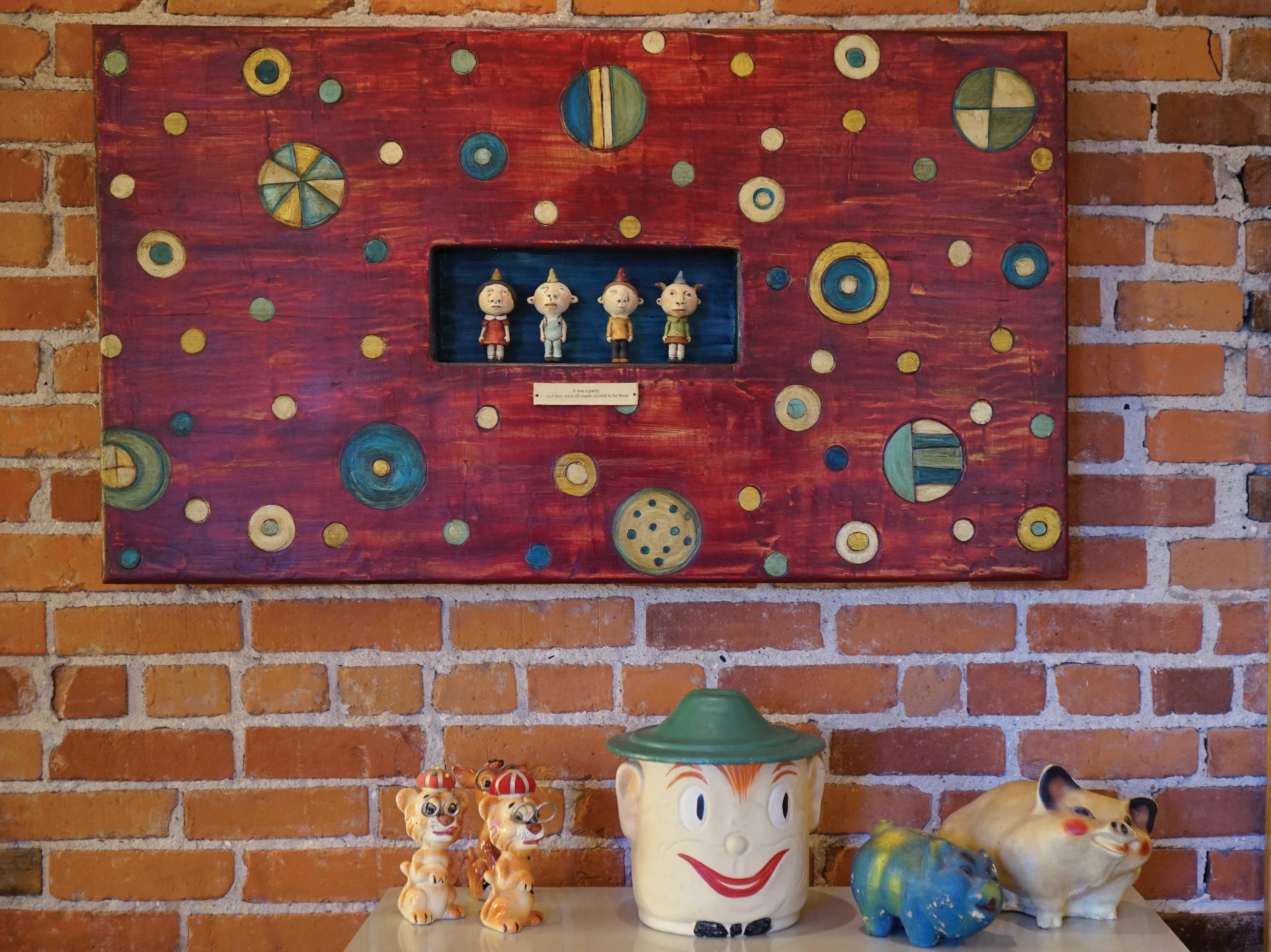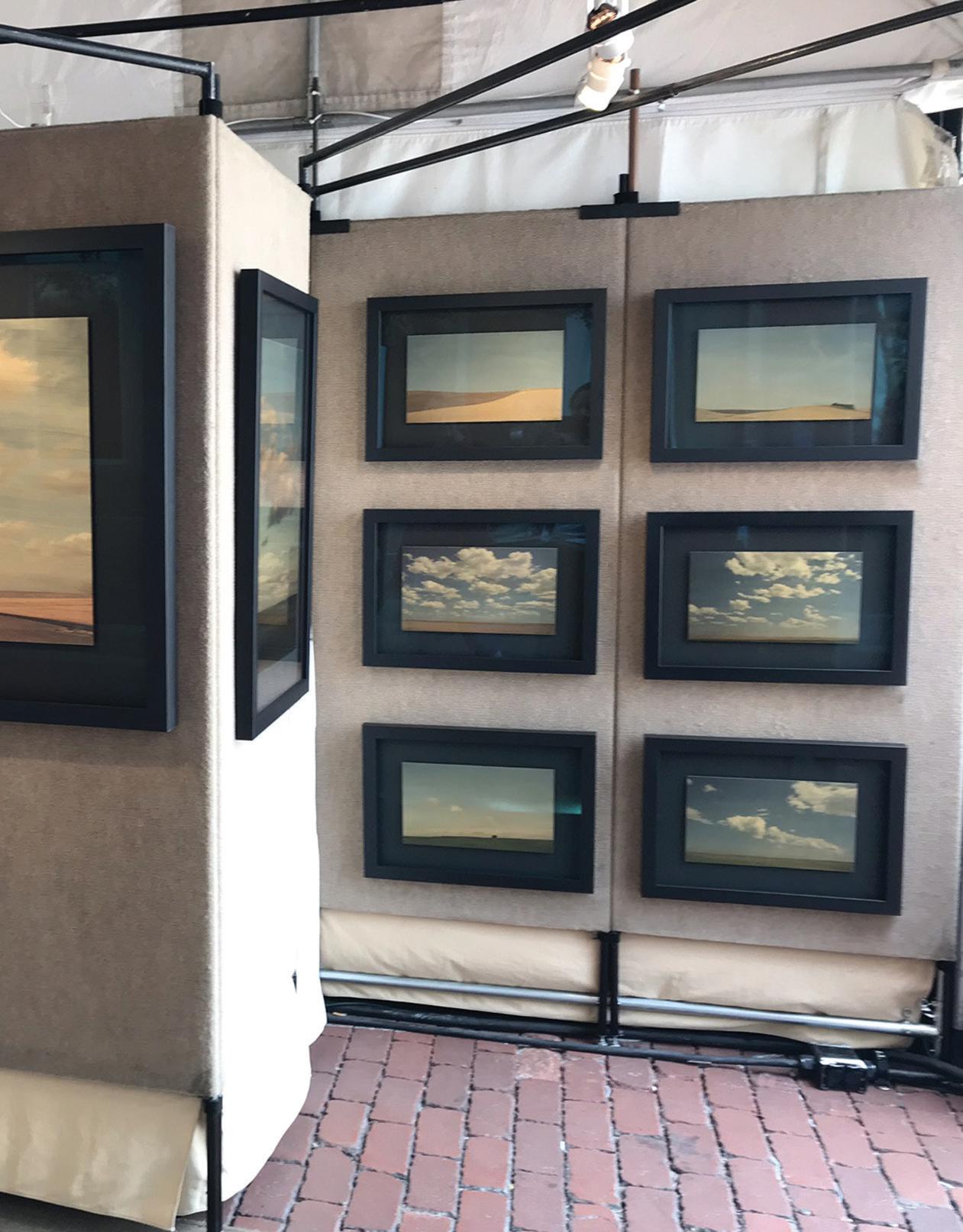
5 minute read
COMMUNITY
from OTK Issue 04
by One To Know

Top: Artwork by MAIN ST. Fort Worth Arts Festival participant Kina Crow Bottom: Artwork by MAIN ST. Fort Worth Arts Festival participant ceramicist Gregory Story
Advertisement
Art and Accessibility
To avoid a sea of homogenized artist booths, MAIN ST. Fort Worth Arts Festival goes beyond encouraging the involvement of diverse artists. It’s enhancing the accessibility between audience and artist and ensuring varied backgrounds and perspectives among its jury members.
By Jennifer Casseday-Blair Photos by Chris Dahlquist
After a two-year hiatus caused by the pandemic, MAIN ST. Fort Worth Arts Festival enthusiastically welcomes back thousands of art seekers to the red-brick-laden, nine-block stretch from the courthouse to the convention center on April 7–10. It was in the early 1980s that Fort Worth’s prominent civic leaders launched this multifaceted festival that transforms downtown into a giant outdoor gallery and concert stage for one weekend each year in the spring. It has become a major catalyst for the city’s cultural growth by uniting people from all walks of life.
One of MAIN ST.’s objectives is to showcase art that is reflective of the community and allows artists to tell stories that may have previously been excluded. Brenda Ciardiello is a Mexican-American contemporary, nature-inspired artist who was accepted to display her work at the 2021 MAIN ST. festival before it was canceled. Her work was featured on the cover of our magazine last month. Brenda expresses that she believes all artists’ perspectives have been shaped and defined by their cultures from the moment they were born. “That said, I don’t paint overtly or literally ‘Mexican’ paintings in that I don’t necessarily represent cliched images of things people associate with Mexico in the mainstream, but my paintings are very much shaped by my experience as a Mexican-American woman, an immigrant, a Texan, and a human being who has also lived all over the world,” she says.



Chris Dahlquist, well-established visual artist and one of five jurors for MAIN ST. 2022 says, “Art festivals nationwide are exploring ways to improve and ensure diversity, equity and inclusion in both the artists and audiences participating in festivals. Because the jury process is subjective, seating a jury of diverse artists and arts professionals who bring a range of backgrounds and perspectives to the process is important.”
Unlike curated collections presented in museums and galleries, festivals are unique in that they allow indigenous, lesser-known artists to gain exposure. “It’s important to acknowledge that there are plural perspectives and experiences in our society. By showcasing and highlighting a diverse set of artists, we encourage a much more diverse set of audiences to engage with art. By allowing more diverse perspectives into our leadership roles — those of curators or gallerists — we foster an art community that better and more realistically reflects our society,” Brenda says.
MAIN ST. has an emerging artist program for those who have limited or no prior experience participating in festivals. With deeply discounted booth spaces and a separate adjudication process, it’s a great way for artists to see if art festivals are an avenue they would like to pursue. To reach the younger demographic, the Growing Young Artists program, presented by Tarrant County College, is designed to leverage the assets of MAIN ST. toward middle and high school students in the Fort Worth ISD and surrounding local schools.

More than 200 young artists typically sell $10,000 worth of art each year.
“MAIN ST. is a celebration of art that removes barriers and centers the direct interaction between audience and artists. This creates a unique space where you can hear directly from an artist about what motivates them, their technique, and the path they took to get there. And you can enjoy some fresh air while visiting more than 200 small artist-owned and -operated galleries from around the country,” Chris says.

Jury Duties
A nonjuried show or festival is one that you can apply to without having to present your work in advance. You basically pay a fee that ensures your spot. For festivals that are juried, like MAIN ST., artists are required to submit their work to a jury panel before being selected. Members of the jury must have a broad and wellrounded knowledge of art, an ability to assess art beyond their own personal tastes, and an open-minded approach to art in general.
Averaging 1,200 applicants for approximately 225 spots, opportunity to present artwork is highly competitive. Artists remain completely anonymous in the selection process. Images of artists’ work and their applications become their “audition.” Too often artists with talent get rejected because they don’t pay enough attention to the details that sway a jury to say yea rather than nay.
Chris explains what qualities she looks for when deciding which artists will compete. “Personally, I consider each applicant, looking for a cohesive body of artwork that demonstrates mastery of materials, a unique point of view and approach to either the subject matter or materials and the quality and effectiveness of their booth display, relative to the other applicants within their artistic discipline (in addition to their work samples each applicant must also supply an image of their artwork displayed in a booth),” she says.
Other factors jurors consider include the quality of the digital images or slides of the artists’ work, adherence to the requirements of the application process, thoughtful presentation (including neutral or complementary framing) and originality. Due to the subjective nature of the process, the panel of jurors for MAIN ST. is different every year, and each applicant begins with a clean slate. “With so many talented artists applying, the job of the five jurors, which is to select the individual artists that will create a balanced and varied show, is not easy,” Chris says.









